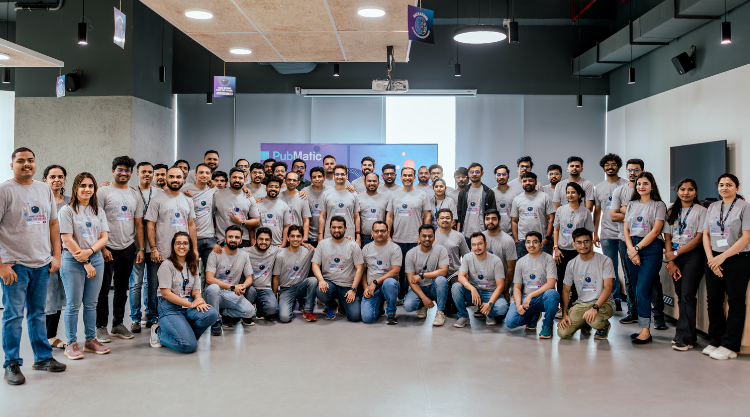One thing we have learned this year, amid the global lockdown and stay-at-home measures, is that our need for content knows no bounds. We’ve all been actively discovering our favourite TV shows, movies, as well as compelling new content through the convenience of streaming, giving publishers more advertising opportunities than ever before.
The growth of ad-supported streaming on connected TVs (CTV) and mobile devices provides new programmatic video advertising revenue opportunities for publishers.
According to a report by PubMatic and Forrester, over-the-top (OTT) ad revenue currently accounts for 30% of programmatic video revenue for US publishers with OTT strategies. In the next 12 months, nearly 75% of respondents expect programmatic ad revenue from OTT content, either through mobile app or CTV, to grow more than other digital video channels.
While OTT ad revenue currently lags behind mobile and desktop, it is still a significant source of programmatic video advertising income. But as with any new emerging platforms, OTT has also faced some issues around standardised measurement and audience control.
In this episode of Unboxed, Elaine Tan (pictured top), head of sales at iQIYI, and Marcus Pousette (pictured bottom), country manager for Southeast Asia, Greater China and Korea at PubMatic, discuss the benefits of OTT, and how it can be a sound investment for brands and advertisers.
MARKETING-INTERACTIVE: What are some of the benefits of OTT?
Tan: One of the benefits is target audience segmentation, which is made much easier with OTT platforms as compared to traditional media. With the increasing popularity of streaming entertainment services among youths, especially those in Southeast Asia, we have the flexibility to segment the target audience by the type of content they are watching.
For example, if you are a beauty brand or a female fashion brand, you might want to have your ads shown on Youth With You, a reality show which skews towards younger female audiences. Additionally, one of the most important benefits is that OTT allows brands to transcend geographies. That’s very useful to brands who have a presence in multiple markets.
Increasingly, we are also seeing people consuming content on the go. In Southeast Asia, the number of people who own at least one digital device is growing every single day. Even when people leave their laptops at home, they look at their phones, instead of billboards and out-of-home ads. So, ultimately, brands which choose to advertise on OTT platforms are able to get eyeballs on their products or services at mass or on a larger scale to their target audience.
Pousette: I think OTT presents a very exciting prospect for the ad industry. Consumer video viewing habits are evolving; time spent on digital video across mobile, desktop and connected devices has been growing a lot and is still growing. I think the last number I saw was that an estimated 1.4 billion people around the world are now subscribing to an OTT service. And I think, when it comes down to it, brands need to be where their consumers are.
If we go back a few years, there was a lot of talk about acquiring incremental reach, almost like a complement, by adding digital video to the media mix, especially in relation to investments in conventional linear TV. Today, as the video-viewing landscape has evolved, we’re seeing more unique audiences in OTT. Hence, OTT streaming video is increasingly becoming a critical part of the media plan, and is used to build brand awareness for many brands.
Another aspect which I believe is equally exciting is the level of potential when you are merging TV and digital. You can deliver a TV-like experience for the viewers with the high impact brand storytelling power of the television screen, combined with the addressability measurements and interactivity of digital. I think that’s very exciting.
MARKETING-INTERACTIVE: Elaine, you mentioned that you are seeing more ad dollars flowing into your platforms. So why do you think there is a shift towards OTT today?
Tan: It’s definitely a very exciting time. Although, from an advertising perspective, TV ads are still the majority in terms of ad spend, we are seeing an increasing amount of investment in OTT advertising. According to a third party report, the CAGR for online video spends is positive. There’s still a lot of room to grow, but even in more traditional markets such as Indonesia, we have seen very promising indicators that brands are moving from traditional mediums to OTT, which is a good sign.
Given the shift, iQIYI has been expanding quite rapidly. We have a lot of new clients who have come on board our platform because of our proven ability to provide customised and diversified ad solutions. It’s something that we’re already quite known for in the domestic market. So what we’re trying to do with iQIYI International is to duplicate that success for our partners in Southeast Asia and beyond.
The content on streaming platforms is also starting to rival the content coming out of traditional broadcasters. For example, iQIYI’s content offering has allowed us to engage with more than five million active users and over a billion monthly video views outside of China. Some of this content has also won awards such as The Bad Kids, an iQIYI Original, which has just won “Best Creative” at the Busan’s Asian Contents Awards.
We are also constantly innovating and using the experience (of the whole platform) to encourage audience retention. On the technical side as an OTT platform, we are able to provide a level of brand safety, measure visibility, as well as third-party tracking and monitoring.
MARKETING-INTERACTIVE: What does the future hold for OTT advertising?
Tan: We are slowly seeing brands start to move from traditional ad formats to OTT platforms. There are ad formats that already exist in China, but are not yet implemented in Southeast Asia. For example, artificial intelligence (AI) ads, or native advertising, which has been growing in demand.
For iQIYI, we are looking to also take the best content or IP in China and bring it to the international market. We want to hyper-localise this evergreen content to make it more relatable to local as well as international audiences. Our clients in China are already benefiting from these innovative solutions, and we hope to be able to provide the same here and replicate the success in the region.
Pousette: I think the future for OTT is very bright. From a programmatic viewpoint, I believe the programmatic ecosystem has a key role in solving many of its challenges, as standards for cross-media measurements, addressability, and so on, are being developed and widely adopted.
I do believe that advertisers will move away from guaranteed upfront buying models, which still is quite common in OTT and digital video in relation to maybe other digital channels. I think they will move towards a more dynamic and flexible programmatic model which focuses on audiences, reach and frequency, similar to TV.
I also believe that many of the challenges are interconnected. When technology and standardisation can bridge the gap of the fragmentation, it will lead to better measurability that will lead to a more uniform view on quality, transparency and performance. This should then lead to better campaign executions, which should lead to a higher return on investment, which then overall, should make OTT more attractive in the overall media mix for brands and advertisers.
By Grace Ong, originally published in Marketing Interactive





